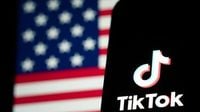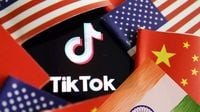On September 25, 2025, President Donald Trump signed an executive order that set the stage for TikTok’s continued presence in the United States, ending months of speculation about the app’s fate and stirring up a new round of debate about the country’s approach to technology and national security. The move, which followed a phone call between Trump and Chinese leader Xi Jinping just six days earlier, was meant to address concerns that had led Congress to pass a law threatening to ban the wildly popular social media platform unless it was sold to a U.S. buyer.
According to Quartz, the agreement puts an American-led investor group—spearheaded by Oracle—in control of 80 percent of TikTok’s U.S. operations. Private equity firm Silver Lake and Abu Dhabi’s MGX fund are also set to join, along with high-profile figures like Larry Ellison, Rupert Murdoch, and Michael Dell. ByteDance, TikTok’s Chinese parent company, will retain a minority stake of less than 20 percent, but crucially, it will continue to control the app’s algorithm—the so-called “secret sauce” that determines what users see on the platform. Instead of a full transfer, ByteDance will license the algorithm to the U.S. group, which will then retrain it using American user data.
This arrangement, designed to address national security fears about Chinese influence over U.S. data and content, has drawn both praise and skepticism. Vice President J.D. Vance, speaking to Fox News on September 28, 2025, was quick to reassure the public. “I feel very confident that we have successfully separated this company from TikTok global and actually made it so that we can control people’s data security,” Vance said. “We can ensure that the algorithm is not being used as a propaganda tool by a foreign government.” He emphasized that over 80 percent of the new company would be owned by American investors and their partners, adding, “This is not something where the Chinese or any Chinese entity has a large stake of the table.”
Still, as Foreign Policy and The New York Times reported, the deal leaves unresolved the very concerns that prompted the original ban. ByteDance’s continued control of the algorithm means that Beijing could, in theory, retain significant influence over the U.S. version of TikTok. Updates to the algorithm, for example, could still be rolled out from China, raising questions about whether American oversight will be robust enough to prevent foreign manipulation or data leaks. And while Oracle will manage a secure cloud designed to block foreign access to U.S. user data, the technical details—and the effectiveness of such controls—remain unclear.
There’s also the matter of how the deal was brokered. Trump’s administration stands to collect billions in fees from the transaction, which Trump described as “a tremendous fee-plus—I call it a fee-plus—just for making the deal, and I don’t want to throw that out the window.” The process has drawn criticism for its lack of transparency and the involvement of Trump’s political allies. Rush Doshi, a former national security official under President Joe Biden, told the Washington Post, “The TikTok deal doesn’t look open to all market participants. It seems like it’s open mostly to those close to the administration already, including its political supporters.”
Some observers see the arrangement as a case of crony capitalism, with the potential for the new board to make partisan decisions about content moderation—ironically echoing the very concerns that U.S. officials have long raised about Chinese ownership of TikTok. The deal’s structure, with its handpicked investors and offloaded control, has led to questions about whether the United States is ceding ground in its long-running technology rivalry with China.
This shift is emblematic of a broader change in U.S. tech policy since Trump returned to office in January 2025. During President Biden’s term, the U.S. adopted a hardline strategy against China, tightening export controls on advanced semiconductor chips and AI technologies. The goal, as described by The New York Times, was to maintain “as large of a lead as possible” over China in key technology sectors, coordinating with allies and subsidizing domestic chip manufacturing. Just days before leaving office, Biden’s administration introduced new rules to restrict the diffusion of AI models and chips to countries like China, Russia, Iran, and Venezuela, aiming to keep sensitive technology out of rival hands.
Yet Trump’s approach has diverged sharply. Rather than doubling down on export controls, his administration has prioritized expanding U.S. tech companies into foreign markets and maximizing economic gains—even if that means relaxing restrictions on China. In June 2025, following a lobbying push by Nvidia CEO Jensen Huang, Trump reversed a ban on sales of Nvidia’s H20 chip to China. In exchange, Nvidia and AMD agreed to give Washington a 15 percent cut of their revenues from Chinese chip sales. Trump recalled the negotiation to reporters: “I said ‘I want 20 percent if I’m going to approve this for you,’ ... And he [Huang] said ‘Would you make it 15?’ So we negotiate a little deal.”
Trump’s priorities were also on display during his May 2025 trip to the Middle East, where he brokered massive AI infrastructure deals. In Abu Dhabi, he inked an agreement to build a data center capable of supporting up to 2.5 million Nvidia B200 chips—the largest AI project outside the United States. Similar deals followed in Saudi Arabia, with the sale of hundreds of thousands of Nvidia’s Blackwell chips to the AI startup Humain. These deals were not just about technology; they were lucrative for Trump’s associates as well. The Emirates reportedly agreed to invest $2 billion in World Liberty Financial, a cryptocurrency startup in which Trump’s family has a stake, while the AI chip negotiations were underway.
All of this has left analysts and allies wondering where U.S. tech policy is headed. The Trump administration’s recent AI action plan, released in July, called for strengthening export controls to keep advanced technology out of adversaries’ hands. Yet, almost immediately, Trump lifted the ban on Nvidia’s H20 chip sales to China, sending mixed signals about the administration’s true priorities. As scholars Abraham Newman and Henry Farrell have observed, “personalism replaces bureaucratic decision-making” in Trump’s Washington, with “short-term profit trumping long-term national interest.”
Looking ahead, Trump is reportedly planning a high-profile trip to Beijing in early 2026, with Commerce Secretary Howard Lutnick already recruiting CEOs for the delegation. In the run-up to this visit, Trump is unlikely to push China too hard on export controls, giving Xi Jinping leverage to seek further concessions—including looser restrictions on advanced chips and more favorable conditions for Chinese investment in the U.S.
The fate of the U.S.-China tech war, then, remains uncertain. While most of the American political establishment remains wary of Beijing’s intentions, the direction of policy now hinges on Trump’s decisions—and, as recent events show, on the deals he’s willing to make.
For now, the TikTok agreement stands as a symbol of this new era: a compromise that seeks to balance national security with economic opportunity, but leaves the underlying questions unresolved. Whether it will truly protect U.S. interests or simply mark a pause in a much larger contest is a question that only time will answer.



